3d printer filament guide
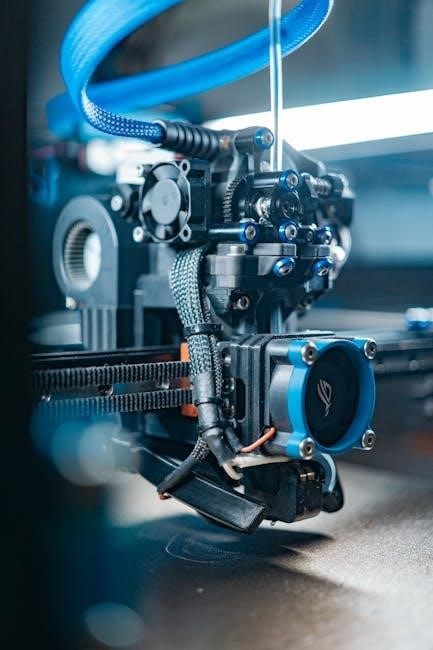
Using 3D printer filaments is essential for creating objects, with various types available, including thermoplastics, which are heated to create flexible materials, allowing printers to sculpt and shape them into desired forms easily always․
What are 3D Printer Filaments
3D printer filaments are materials used in 3D printing to create objects, they are made of different types of plastics and other materials․
These filaments are melted and extruded through a heated nozzle to create the desired shape․
The properties of the filament used can affect the strength, durability and appearance of the printed object․
Filaments can be made from a variety of materials, including thermoplastics, which are the most common type used in 3D printing․
They are available in different colors, sizes and types, each with its own unique characteristics and uses․
The choice of filament depends on the specific application and the desired properties of the printed object․
Understanding the different types of filaments and their properties is essential for achieving successful printing results․
Filaments are an essential component of the 3D printing process and play a crucial role in determining the quality and appearance of the printed object․
Importance of Filaments in 3D Printing
The importance of filaments in 3D printing cannot be overstated, as they are the fundamental building blocks of the printing process․
Filaments determine the physical properties of the printed object, such as its strength, durability, and texture․
The quality of the filament used can greatly impact the overall quality of the printed object, making it essential to choose the right type of filament for the specific application․
Filaments also play a crucial role in the cost-effectiveness of 3D printing, as the cost of the filament can vary greatly depending on the type and quality․
Furthermore, the availability of a wide range of filaments has enabled the creation of complex and customized objects, which has opened up new possibilities for various industries․
The development of new and innovative filaments is ongoing, which is expected to further expand the capabilities of 3D printing․
Overall, the importance of filaments in 3D printing lies in their ability to enable the creation of complex and customized objects with specific properties․
This has made 3D printing a vital tool in various industries, including engineering, architecture, and healthcare․
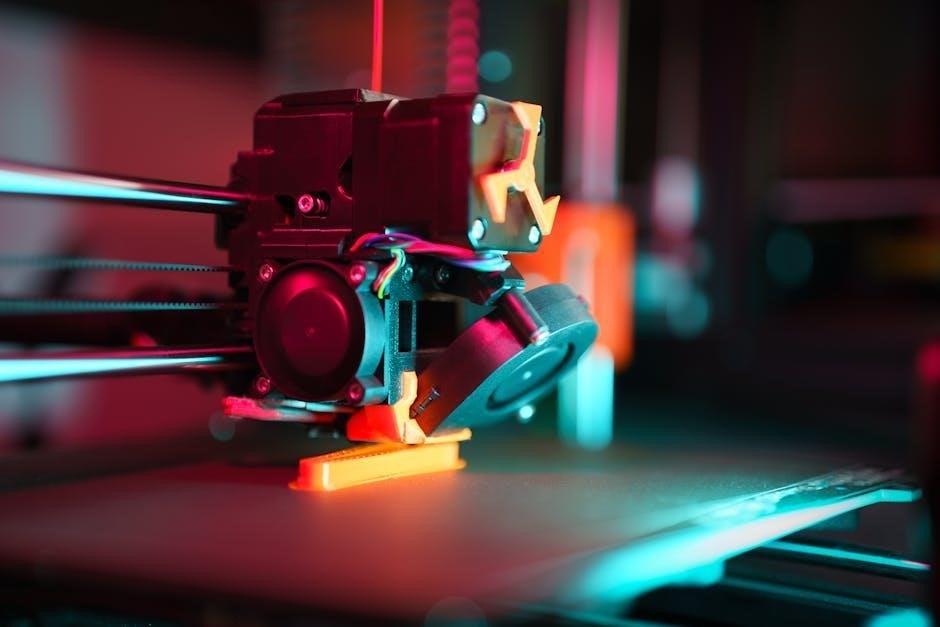
Types of 3D Printer Filaments
Various 3D printer filaments exist, including thermoplastic materials always used for printing objects with specific properties easily every time with different materials and equipment available․
Flexible Filaments
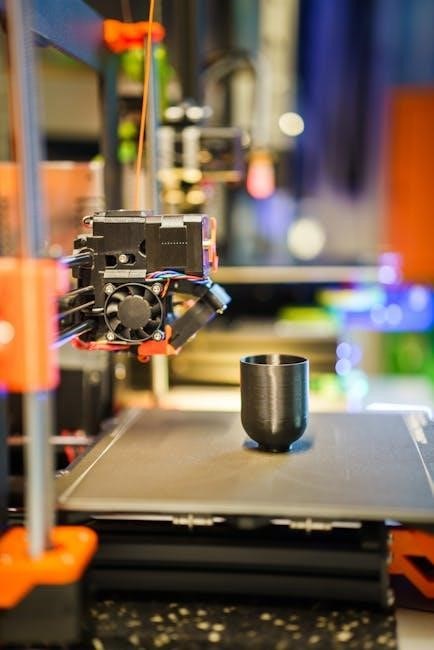
Flexible filaments are a type of 3D printing material that can be stretched and bent without breaking, making them ideal for creating objects that require flexibility and durability․
These filaments are often used to create objects such as phone cases, watch straps, and other flexible products․
They are typically made from thermoplastic elastomers, which are a type of plastic that can be heated and cooled multiple times without losing their shape or flexibility․
Flexible filaments are available in a range of shore hardness levels, from very soft to very hard, allowing users to choose the level of flexibility that is right for their project․
They can be printed using a variety of 3D printing technologies, including FDM and SLA․
Flexible filaments are a popular choice among 3D printing enthusiasts and professionals alike, due to their unique properties and versatility․
They offer a range of benefits, including flexibility, durability, and resistance to impact and abrasion․
Overall, flexible filaments are an exciting and innovative material that can be used to create a wide range of unique and functional objects․
They are an important part of the 3D printing landscape and will continue to play a major role in the development of new and innovative products․
Flexible filaments are widely available and can be purchased from a variety of online retailers and specialty stores․
Rigid Filaments
Rigid filaments are a type of 3D printing material that is known for its strength and rigidity, making them ideal for creating objects that require structural integrity and durability․
These filaments are often used to create objects such as mechanical parts, tools, and other items that need to withstand heavy use․
Rigid filaments are typically made from materials such as PLA, ABS, and PETG, which are known for their high strength and low flexibility․
They can be printed using a variety of 3D printing technologies, including FDM and SLA․
Rigid filaments are a popular choice among 3D printing enthusiasts and professionals alike, due to their high accuracy and precise printing capabilities․
They offer a range of benefits, including high strength, low warping, and excellent layer adhesion․
Rigid filaments are widely available and can be purchased from a variety of online retailers and specialty stores․
They are an essential part of the 3D printing process and are used in a wide range of applications, from prototyping to production․
Rigid filaments are easy to print with and require minimal post-processing, making them a great choice for beginners and experienced users alike․
They are a versatile material that can be used to create a wide range of objects, from simple to complex․
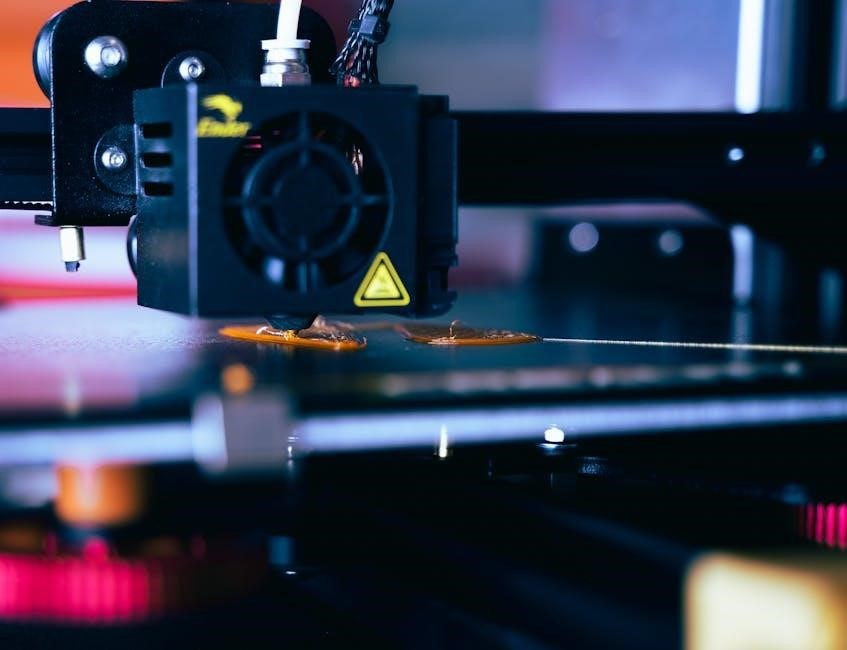
Properties of 3D Printer Filaments
Understanding filament properties is crucial for successful 3D printing, with factors like melting point and viscosity affecting print quality and outcome always precisely․
Thermal Properties
The thermal properties of 3D printer filaments play a crucial role in determining their suitability for various printing applications․
These properties include the melting point, glass transition temperature, and thermal conductivity of the filament․
The melting point is the temperature at which the filament begins to melt and becomes moldable, while the glass transition temperature is the point at which the filament changes from a rigid to a flexible state․
Understanding these thermal properties is essential for achieving optimal printing results and preventing issues such as warping or delamination․
By selecting a filament with suitable thermal properties, users can ensure that their prints are of high quality and meet their specific needs․
Additionally, thermal properties can affect the durability and longevity of the printed object, making it important to consider these factors when choosing a filament․
Overall, the thermal properties of 3D printer filaments are a critical aspect of the printing process, and understanding them is vital for successful and effective printing․
Mechanical Properties
The mechanical properties of 3D printer filaments are essential in determining their performance and behavior under various conditions․
These properties include tensile strength, impact resistance, and flexibility, which affect the overall durability and functionality of the printed object․
A filament with high tensile strength can withstand significant stress and strain without breaking, while a filament with high impact resistance can absorb shocks and bumps without cracking․
Flexibility is also an important mechanical property, as it determines the filament’s ability to bend and deform without breaking․
Understanding the mechanical properties of 3D printer filaments is crucial in selecting the right material for a specific application․
For example, a filament with high tensile strength and impact resistance may be suitable for printing functional parts, while a flexible filament may be better suited for printing wearable items or flexible components․
By considering the mechanical properties of 3D printer filaments, users can create prints that meet their specific needs and requirements, and ensure optimal performance and longevity․
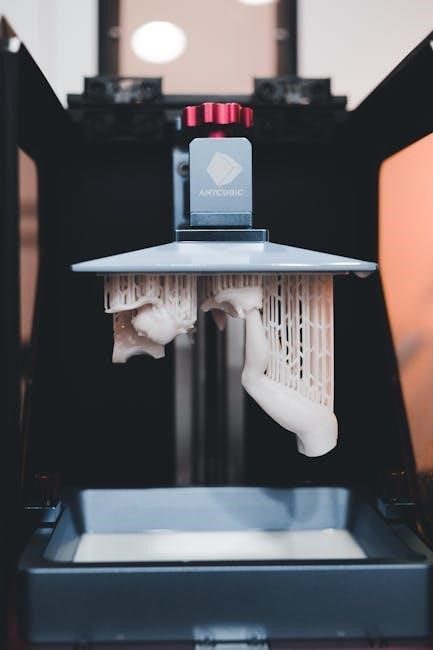
Applications of 3D Printer Filaments
Using 3D printer filaments enables creation of various objects for personal and professional use always easily․
Personal Projects
Individuals can utilize 3D printer filaments for various personal projects, such as creating customized phone cases, decorative items, and functional tools․ With the ability to print complex designs, users can bring their innovative ideas to life․
Many hobbyists and enthusiasts use 3D printing to create prototypes, models, and art pieces, showcasing their creativity and skill․ The versatility of 3D printer filaments allows for a wide range of applications, from fashion accessories to home decor items․
Moreover, 3D printing has become a popular medium for educational projects, enabling students to learn about science, technology, engineering, and mathematics (STEM) concepts in a hands-on and interactive manner․ Overall, the use of 3D printer filaments in personal projects has opened up new avenues for creativity, innovation, and self-expression․
Professional Projects
Professional projects often require high-quality and durable 3D printed products, which can be achieved with the right type of filament․ Companies in the aerospace, automotive, and medical industries use 3D printing to create complex components, prototypes, and models․
Architects and engineers also utilize 3D printing to create detailed scale models of buildings and structures, allowing for better visualization and communication of their designs․ Additionally, 3D printing is used in the production of custom tooling, molds, and production parts, reducing lead times and increasing efficiency․
The use of 3D printer filaments in professional projects has revolutionized the way companies design, prototype, and manufacture products, enabling them to bring innovative ideas to market faster and more cost-effectively․ With the continued advancement of 3D printing technology, the applications for professional projects will only continue to expand and diversify, driving growth and innovation in various industries․